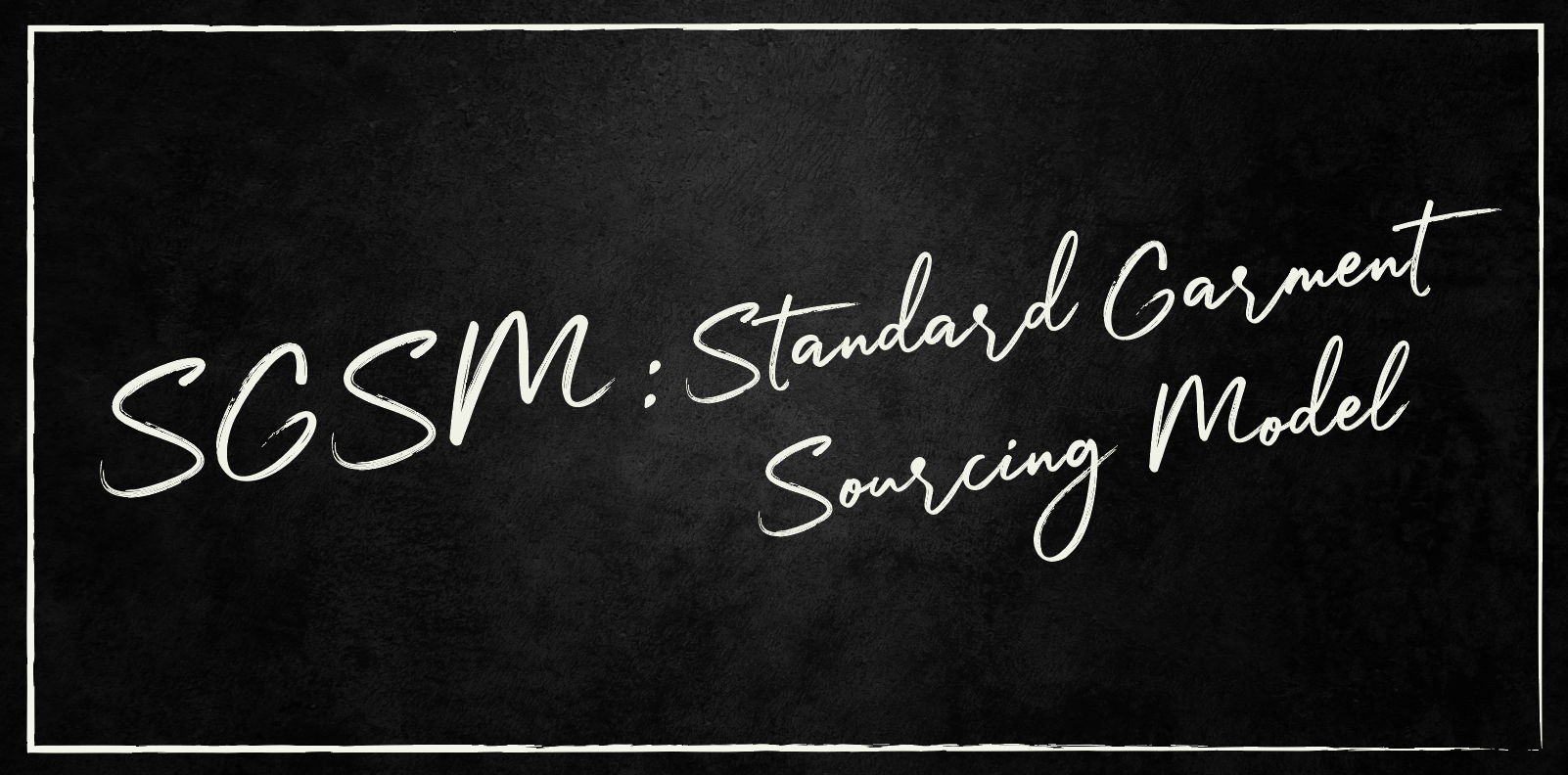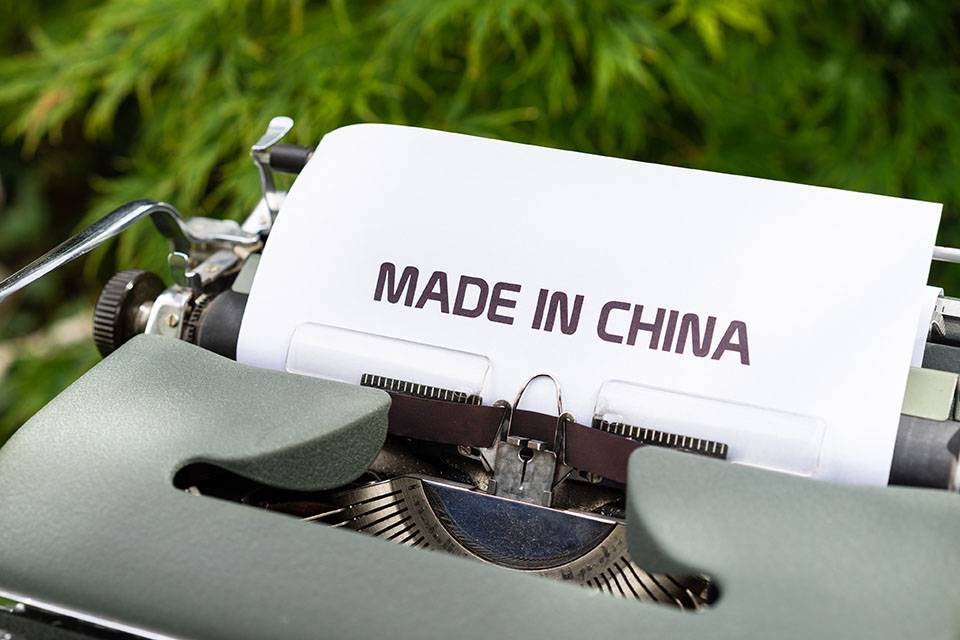Sourcing is not a new concept.
Even before the Industrial Revolution, people sourced things they needed. Back then, women were in charge of producing clothes for the family. When women needed certain materials to complete clothing construction, they sourced the materials from the neighbors, friends, family, and other entities. Acquiring the right materials to complete the task at hand is not a new phenomenon in human history as one can see from the history of bartering.
Significant changes then occurred in the way humans exchanged materials and finished goods, after the Industrial Revolution. It shifted the manufacturing of clothing from home to factories. Women no longer made clothing at home. They started purchasing ready-made clothing from the marketplace.
The need for Sourcing became important and it became a profession.

With my advent in the Apparel Sourcing world, I started to notice how people outside our industry appear to be fascinated by the subject of garments and their manufacturing. We are not speaking of fashion design here. We are speaking of the far more esoteric topics of garment sourcing, product development, and product costing.
At a dinner party, no one ever corners a tyre manufacturer to discuss the intricacies of the tread design. But once it is discovered that you are a garment sourcing specialist, you immediately become the center of attention.
We, the so-called specialists, think we have all the answers and maybe for the first initial years, being the center of attention and patiently trying to explain why it is reasonable that a pair of jeans consisting of 1.2 meters of denim fabric and less than one hour of labor should cost Rs 10,000/- at an Armani or Diesel store, or why it takes 24 weeks to produce and ship a pair of jeans. As the conversation proceeds, you get to see how the expressions on the faces of your audience change from anticipation to bemusement, and finally to comprehension. You can almost see the light go on. ‘I finally understand,’ the look says.
It took me almost 20 years to understand just what ‘I finally understand’ means. It is neither an epiphany nor a revelation. Your audience, every single person, has reached the same conclusion and it runs something like this: “This person is crazy. The entire garment industry is made up entirely of crazy people. I have been spending my hard-earned money – Rs 10,000/- on a pair of denim jeans which at the factory costs about Rs 600/- and this lunatic is assuring me that the process by which garments are made is logical, reasonable, and efficient.”
Let us now take a step backward.
The quota regime, in place since 1963, was originally designed to protect the domestic industries in the garment importing countries. In fact, by providing an artificial protective wall, quotas removed the need for the garment factories in importing countries to make the investments required to remain competitive internationally. Through the years, domestic garment industries in both the United States and almost every country in Western Europe essentially collapsed.
The quota regime soon became an obstacle to developing globally competitive industries. Cambodia, Bangladesh, the sub-Saharan African countries, the Caribbean countries, and Mexico all entered the garment industry exporting cotton casual trousers, Tee shirts, and woven cotton shirts and blouses. These were excellent entry-level products. Quantities per order were large. There is a place in the market for average quality goods.
However, there is an unavoidable downside to this scenario. Because these are entry-level products, competition is brutal. In fact, for a basic Tee shirt or average quality five-pocket jeans, there is no bottom price. In a normal market, as management becomes more knowledgeable and worker skills increase, factories move as quickly as they can from entry-level to higher value-added goods.
But normal did not happen. What has happened is that industry in the garment exporting countries has not progressed at all since 1990.
After quota phase-out, buyer requirements increased, forcing developing country garment manufacturers to take over new functions in the value chain, including sourcing and raw material supply management.
This is a difficult task for many garment-exporting developing countries as most lack a vertically integrated industry and consequently operate under cut-make-trim (CMT) terms. Manufacturers in most developing countries still depend on imported yarn, fabric, trims, and other inputs to produce export-oriented apparel. For example, in Bangladesh, around 70% of the FOB value of a woven shirt is made up of imported inputs. Currently, the retailers of finished products or their agents source these inputs on behalf of their developing country garment manufacturers. But now these operations are increasingly being passed on from the retailer or their agents to the factories which are expected to offer full package services
As we see, clothing manufacturing small and medium-sized enterprises (SMEs) are faced with six major trade-related needs:
- Lack of a clear sector strategy to confront future challenges.
- Insufficient understanding of competitors.
- Absence of fabric and trim sourcing skills to become ‘full package’ suppliers.
- Insufficient understanding of changing world markets.
- Insufficient understanding of the importance of e-commerce and how to respond to new requirements of buyers.
- Lack of product and market development skills and approaches, particularly in penetration of fast-growing southern hemisphere markets.
The garment industry world of pre-1990 was fairly comfortable. Everybody competed, but competition levels were acceptable, and everybody had a place.
The more competitive countries such as Greater China, the Republic of Korea, and Taiwan Province were restricted by quota which allowed the less competitive to co-exist. Each of the two groups of traditional garment exporters managed to maintain its market share.
However, beginning in 1990, the world began to change and an entirely new generation of garment exporting countries entered the fray, disrupting the previously relatively stable world scenario. Many of these countries had been granted special preferences by industrialized garment importing countries, allowing them to rapidly increase exports.
Many of the newcomers, such as Bangladesh, Cambodia, El Salvador, Honduras, Sri Lanka, and Vietnam, rely on garments for over half of their total foreign exchange earnings. For the government of these countries, garment manufacturing has been the locomotive of economic growth, providing jobs and industrial development, and they were little concerned over maintaining the previous status quo. The result has been a dramatic and rapid increase in worldwide garment production capacity. These new players needed garment exports to develop their economies and were willing to do whatever was necessary to attract customers. For countries with little to offer besides cheap labor, that hunger has translated into reduced CMT (cut-make-trim) and FOB prices (prices for complete garments), which gave rise to the concept of Fast Fashion.

Two main characteristics of the quandary facing the garment exporters today which stand out are:
- The concentration of production into only three product groups ( tee shirts, blouses, and woven cotton shirts).
- The failure to go beyond the dependence on cheap labor.
On 1 January 2005, garment export quotas were phased out, changing forever the face of the international garment industry. To meet the new challenges of the post-quota era, every garment factory in the world must find answers to two fundamental questions:
- What will customers demand of my factory?
- What steps must I take to meet those demands?
To understand the demands of the buyers we must first understand how the buyers are currently sourcing garments. Since the beginning garment sourcing has consisted of traveling to the ends of the earth in search of the lowest FOB price, in turn, defined as the lowest CMT cost and ultimately the lowest direct-labor rate. With the advent of quotas, the definition of the lowest FOB price was expanded to include the lowest quota cost.
Going to the ends of the earth came with inherited substantial difficulties. I learned it the hard way when I and my customer took a flight in dead of winter to North Korea scouting factories that could manufacture winter jackets. Sounds crazy now!!
Slowly the realization dawned that the lowest-labor-cost countries seldom had existing garment industries. Much of the work had to be carried out by customers or their locally based agents. What resulted was a global garment industry unable to compete in a free market. The newest players in the industry had a very narrow product base and lacked the necessary skills to provide many of the facilities demanded by customers which were readily available from the established Asian garment exporters. As we have already seen, most of the new garment exporting countries had but one asset – cheap labor. To ensure factories in these countries were able to ship quality garments on time, both the importer and agent were forced to play major roles in the garment manufacturing process. Over time, a system was developed to carry out these tasks which we will call the Standard Garment Sourcing Model (SGSM).

SGSM became the model for all garment sourcing. It comprises of:
Retailer /Importer - Overseas agent - Factory
The SGSM system assumed the customer would travel to the ends of the earth in search of cheap labor. Yet, sooner or later, the customer always seemed to end up back in the higher-labor-cost countries with their established export garment industries like China where average labor rates are about 200% higher than those in its cheaper-labor Asian competitors such as Cambodia, Bangladesh, India, Indonesia and Vietnam and FOB’s were higher.
A question arises, if the purpose of sourcing is to buy at the lowest cost, and if the lowest cost is defined as the lowest FOB price, then why would any rational sourcing professional import garments from a country with demonstrably higher FOB prices? More to the point, why would almost every sourcing professional act in the same way?
The time finally supplied an answer, and the world of garment sourcing was turned on its head.
Retail must understand the concept of Full value costing.
Full value costing, a new system to calculate costing, is that:
- Lower labor rates do not equate with lower CMT costs.
- Lower CMT costs do not equate with lower FOB prices.
- Lower FOB prices do not equate with lower garment costs.
To understand the logic of these statements, one needs only to look at a normal garment costing:
Men’s woven cotton shirt Fabric will cost approx. $ 3.00
CMT will be approx-- $ 2.50
FOB works out approx --$ 5.50
To this, if you add freight, duty, etc the cost will work out to approx. --$ 7.00
With retail mark up this $ 7 shirt sells at about $ 28.
Sourcing must educate the retailers that FOB costs are but a secondary factor in determining retail prices. CMT costs are also only a secondary factor determining FOB price. These secondary prices comprise only about 30% of the retail price. The place to save money is in the other 70%, not the CMT.
Also, sourcing must understand that the labor rates which do not consider productivity do not reflect true costs. Even after factoring in productivity, labor cost remains a negligible part of garment cost.
The problem with SGSM was that the main garment costs never appeared on the garment costing sheet. These are the pre-production and post-production costs.
Pre-production costs are the costs from the beginning of the design process to the loading of the finished garments onto the ship or other means of transport, the entire cycle takes approximately 24 weeks. Of this period, pre-production accounts for 80% – 19 weeks. Production accounts for only 20% – 5 weeks. Furthermore, it is during the pre-production period that all the expensive salaries go out. For example, a single Italian pattern maker is paid more than 300 machine operators in Bangladesh. If the goal is to save money, do not look at the cost of sewing in Bangladesh, but rather the cost of pre-production in-house.
Retail must also understand that in the Post-production costs, the single greatest controllable cost is the markdown rate – the difference between the planned retail price and the average price at which the garments are sold at. If a buyer wants to save money, the largest area of potential savings is in the markdown.
From the buyer’s standpoint, the solution to savings of markdown is speed to market.
Once you include the garment’s Full Value Cost, importers’ preference for China and the other established exporting countries becomes quite clear.
China is the garment exporting country of choice because it provides the lowest Full Value Costs: Not the lowest labor rates. Chinese workers are paid up to approx. 200% more than those in Bangladesh. Not the lowest CMT price. The average CMT cost of a made-in-China men’s woven cotton shirt is about 35% higher than the same shirt produced in Bangladesh. Not the lowest FOB price. The average FOB price of a made-in-China men’s woven cotton shirt is about 55% higher than the same shirt produced in Bangladesh. What Greater China does provide is the best pre-production of any garment exporting country except for Italy. China provides speed to market from 10,000 miles away faster than Mexico and the Caribbean countries which are located at the United States’ doorstep. These are the advantages that make China competitive with any garment exporting country in the world.

Sourcing agents should understand that retailers and importers do not flock to China to buy cheap garments. In fact, just the opposite is true. Customers go to China prepared to pay a premium price. Furthermore, garment quality is also not at issue. A good Chinese factory will ship a properly made garment. So too will a good factory located in India, Guatemala, Romania or Australia. In fact, good quality is no longer an asset, it is a minimal requirement.
Countries hoping to win ‘The Next China’ race also need to do more than shipping nice garments on time. Yet, for the most part, many countries are moving in an entirely different direction to that of China.
China’s strength also lies in its exports of the less important secondary items. In addition to 100% silk and ramie fiber garments, products where it controls the entire market by virtue of its near-monopolies on fiber and fabric – categories which are not even included in our discussion – China’s dominance is in items such as down coats, gloves and handkerchiefs, and trims.
China’s overwhelming success is based on the fact that China does not concentrate on any single product at all. Bangladesh may be the world’s great cotton shirt supplier and Honduras the T-shirt king, but only China supplies everything.
With its high efficiency, research, and development capacity as well as mature transport and logistics services, China's textile and apparel industry remain the most reliable suppliers of global fashion brands despite potential supply chain disturbances from the ongoing U.S.-China trade tensions.
The Chinese textile manufacturers are also proactively moving toward automation and smart production through technological innovation and nurturing indigenous brands to move up the value chain.
The ongoing trade dispute between the United States and China is pushing Chinese manufacturers to move up more upscale and shift their production away from products that do not need to be made in China and that is going to make China more competitive in the long run.
In India and many countries, most of us think we are working in partnership with our buyers. We firmly believe that each side has a role to play and each side has responsibilities. The factory must produce lab dips and the customer must approve lab dips. If each partner performs its tasks correctly and on time, the order is shipped on time. If the customer fails to perform on time, the order will be shipped late. The blame game starts. But in reality, this step-by-step partnership concept simply does not work.
The good Chinese garment supplier also looks at its client relationship as a partnership. However, in the Chinese factory’s mind, the buying side has only one responsibility – to pay for the goods. As long as the buyer successfully performs this single task, the factory must do everything else.
The customer pays for the goods – the factory does everything else. Simple mantra.
The day we all learn this we will be successful.
RELATED TOPICS:#Apparel,Sanjay Lal
Leave a comment
Our email address will not be published. Required fields are marked *







7 Comments
PradumnaMar 07, 2021 at 17:54 pm
Well written article by a person with experience ...times are changing fast - tech is the mantra of the new age - adaption to the changing times is the key to success ....
PremjitMar 07, 2021 at 11:48 am
a very well written article and a guide to most in the sourcing industry.Thank!!
Poonam Sood LalMar 07, 2021 at 09:31 am
Well written article. The industry is floundering and has not found the final solution. The key to understand is that CMT which we all negotiate so ardently is only a very very small component of cost. The fabric and trims are the main cost Then add cost to company of manpower involved and cost of logistics which are all hidden costs but controllable and you will get actual cost. No one seems to add the full cost to company strangely and feel it will come out of the markup. Strange
Deepak PunshiMar 06, 2021 at 16:22 pm
Kudos for a brilliantly researched post....what a journey it has been for you to put ur views so clearly...
MitaMar 06, 2021 at 13:40 pm
Very well researched & very well written & explained.
Maj Gen Ranvir YadavMar 06, 2021 at 10:07 am
Very insighfull, interesting n well written article...I didn't know there is business called souring.. Very logical n easy to understand...Well done . Must read for youngsters who want venture into garment industry..
Anika PassiMar 06, 2021 at 09:56 am
V good article Sanjay ji We should connect If you hv time please do call